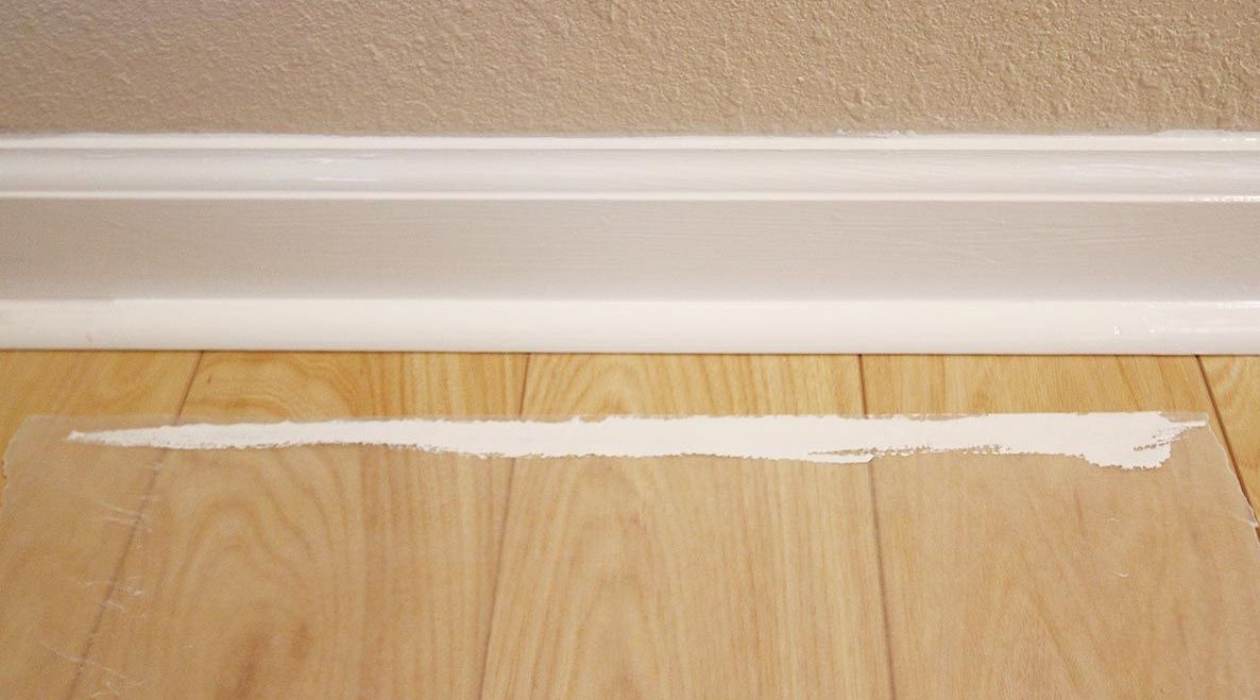

Articles
How To Paint And Stain Baseboards
Modified: January 9, 2024
Learn how to paint and stain baseboards with our informative articles. Find tips, tricks, and step-by-step guides to achieve a professional finish.
(Many of the links in this article redirect to a specific reviewed product. Your purchase of these products through affiliate links helps to generate commission for Storables.com, at no extra cost. Learn more)
Introduction
Baseboards are an essential part of any interior design, providing a polished finishing touch to a room. However, over time, baseboards can become scuffed, dirty, or lose their original luster. Painting or staining baseboards is a great way to rejuvenate their appearance and breathe new life into your space.
Painting or staining baseboards is a relatively simple and cost-effective DIY project that can instantly transform the look and feel of a room. Whether you’re looking to update your baseboards to match a new color scheme or restore them to their original beauty, this comprehensive guide will walk you through the process step-by-step.
In this article, we will explore the different types of baseboards, discuss the necessary preparations, and guide you through each stage of painting or staining your baseboards. By following these instructions, you’ll be able to achieve professional-looking results and enjoy the satisfaction of a job well done.
Before we dive into the details, it’s important to note that baseboards come in various styles and materials. Some of the most common types include:
- Wood baseboards: These are traditional and versatile, available in different species of wood, which can be painted or stained to match your desired aesthetic.
- MDF baseboards: Made from medium-density fiberboard, MDF baseboards are affordable and come pre-primed, making them easier to paint.
- Vinyl baseboards: These are low-maintenance and ideal for moisture-prone areas such as bathrooms or kitchens.
- Tile baseboards: Often used in bathrooms, these baseboards are made from ceramic, porcelain, or natural stone and provide a seamless transition from the floor to the wall.
Now that we have a basic understanding of the different types of baseboards, let’s explore the step-by-step process for preparing and painting or staining your baseboards.
Key Takeaways:
- Transform your space with a DIY baseboard painting or staining project. From preparation to installation, achieve professional results and elevate your room’s aesthetic with patience and attention to detail.
- Understand the different types of baseboards and follow a comprehensive step-by-step guide to rejuvenate your space. Achieve a polished finish and enjoy the satisfaction of a job well done.
Read more: How To Paint Baseboards With Carpet
Types of Baseboards
When it comes to baseboards, there are several different types to choose from, each with its own unique characteristics and aesthetic appeal. Understanding the different types will help you choose the right baseboards for your project. Here are the most common types of baseboards:
- Wood Baseboards: Wood is a traditional and timeless option for baseboards. It offers a natural, classic look and can be easily customized through painting or staining. Wood baseboards are available in various species, such as pine, oak, or maple, each with its own distinct grain pattern and durability.
- MDF Baseboards: MDF, or Medium-Density Fiberboard, is a popular choice for budget-friendly baseboards. It is made from compressed wood fibers and resin, resulting in a smooth and uniform surface. MDF baseboards are typically pre-primed and ready for painting, making them an easy and cost-effective option.
- Vinyl Baseboards: Vinyl baseboards are an excellent choice for areas prone to moisture, such as bathrooms or laundry rooms. They are resistant to water damage and are easy to clean, making them a low-maintenance option. Vinyl baseboards come in various styles and can mimic the look of wood or tile.
- Tile Baseboards: Tile baseboards offer a seamless transition between the floor and the wall, making them a popular choice for bathrooms and kitchens. They are durable, easy to clean, and can be coordinated with the tile flooring for a cohesive look. Tile baseboards are available in a range of materials, including ceramic, porcelain, and natural stone.
- PVC Baseboards: PVC, or Polyvinyl Chloride, baseboards are known for their durability and resistance to moisture and termite damage. They are easy to install and maintain, making them an ideal choice for high-traffic areas.
When selecting the right type of baseboards for your project, consider factors such as the style of your home, the level of maintenance you’re comfortable with, and the specific needs of the space where the baseboards will be installed. Additionally, take into account the overall aesthetic you wish to achieve, whether it’s a classic and elegant look or a contemporary and sleek design.
Now that we have explored the different types of baseboards available, let’s move on to the next step: preparing your baseboards for painting or staining.
Preparing the Baseboards for Painting or Staining
Before you can paint or stain your baseboards, it is crucial to properly prepare them. Preparation ensures that the paint or stain adheres well and produces a smooth and long-lasting finish. Here are the steps to follow when preparing your baseboards:
- Clean the Baseboards: Start by thoroughly cleaning the baseboards to remove any dust, dirt, or grime. Use a mild detergent and warm water solution, along with a sponge or soft cloth, to gently scrub the surface. Pay special attention to corners and crevices where dirt may accumulate. Rinse the baseboards with clean water and allow them to dry completely before proceeding.
- Repair any Damages: Inspect the baseboards for any damages, such as cracks, chips, or loose sections. Repair these issues using wood filler or caulk, depending on the type of baseboard material. Follow the manufacturer’s instructions for the specific product you are using. Once the repairs are complete, sand the repaired areas lightly to ensure a smooth finish.
- Sand the Baseboards: Sanding the baseboards helps to create a smooth surface and removes any existing finishes or imperfections. Use fine-grit sandpaper and sand along the grain of the wood or the surface of the baseboard material. Be careful not to sand too aggressively, as it can damage the baseboards. After sanding, wipe away the dust with a damp cloth or tack cloth.
- Tape off Adjacent Surfaces: To protect adjacent walls or flooring from paint or stain, use painter’s tape to create a clean and defined line along the edge of the baseboards. Ensure that the tape is pressed firmly against the baseboards to prevent any paint bleeding.
- Apply a Primer (Optional): Applying a primer is recommended, especially if you are working with bare wood or MDF baseboards. Primer helps to seal the surface, enhances the adhesion of the paint or stain, and provides a consistent base for the final finish. Choose a primer suitable for your baseboard material and follow the manufacturer’s instructions for application and drying time.
By properly preparing your baseboards, you create an ideal surface for the paint or stain to adhere to. This results in a more professional-looking finish and better durability over time. Once the preparation is complete, you’re ready to move on to the actual painting or staining process.
Tools and Materials Needed
Before you begin painting or staining your baseboards, gather all the necessary tools and materials. Having everything prepared in advance will streamline the process and ensure that you have everything you need to complete the project. Here is a list of the tools and materials you will need:
Tools:
- Paintbrushes: Choose high-quality paintbrushes in various sizes to accommodate different areas of the baseboards.
- Roller and Tray (optional): If you prefer using a roller for painting, select a mini roller and tray for easy application.
- Sandpaper: Obtain fine-grit sandpaper for smoothing the baseboards.
- Sanding Block or Sanding Sponge: Use a sanding block or sanding sponge for convenience and to assist in achieving a smooth surface.
- Tack Cloth or Damp Cloth: Prepare a tack cloth or a damp cloth to wipe away dust and debris after sanding.
- Caulk Gun: If you need to apply caulk to repair any baseboard damages, a caulk gun will be necessary.
- Putty Knife or Wood Filler Knife: Depending on the type of baseboard material, have a putty knife or wood filler knife on hand for repairing cracks or chips.
- Drop Cloths or Plastic Sheets: Protect the flooring and surrounding areas with drop cloths or plastic sheets to prevent any paint or stain drips.
- Painter’s Tape: Use painter’s tape to create clean edges and protect adjacent surfaces from paint or stain.
- Primer (optional): If you decide to use a primer, select one suitable for your baseboard material.
Materials:
- Paint or Stain: Choose a paint color or wood stain that complements your desired aesthetic. Consider the finish as well, whether it’s matte, satin, or semi-gloss.
- Primer (if using): Select a primer that is compatible with your baseboard material and the type of paint or stain you will be using.
- Caulk: If you are repairing any damaged areas, choose a caulk that matches the color of your baseboards.
- Paint Thinner or Mineral Spirits (if using oil-based paint or stain): If you opt for oil-based paint or stain, you may need paint thinner or mineral spirits for cleanup.
Having all the necessary tools and materials readily available will help facilitate a smooth and efficient painting or staining process. Additionally, it ensures that you are well-prepared to achieve the desired results. Now that you have everything you need, it’s time to move on to the step-by-step instructions for painting or staining your baseboards.
Step 1: Removing the Baseboards
Before you can start painting or staining your baseboards, you’ll need to remove them from the wall. This step allows for easier access and ensures a more even and professional finish. Follow these steps to safely and efficiently remove the baseboards:
- Gather the necessary tools: You’ll need a pry bar, a hammer, a putty knife, and a small block of wood or a scrap piece of baseboard.
- Start at a corner: Begin at a corner of the room and carefully insert the end of the pry bar between the baseboard and the wall.
- Gently pry the baseboard away from the wall: Apply light pressure on the pry bar to create a gap between the baseboard and the wall. Place the small block of wood or scrap piece of baseboard against the wall to protect it from any damage caused by the pry bar.
- Move along the length of the baseboard: Once you’ve created a gap at the corner, continue moving along the length of the baseboard, using the pry bar and block of wood to slowly and evenly separate it from the wall.
- Remove any nails: As you remove the baseboard, you may encounter nails or brads that were used to secure it to the wall. Use the hammer or a pair of pliers to carefully remove these fasteners.
- Keep the baseboards organized: As you work, label the back of each baseboard or create a diagram to keep track of their placement. This will make reinstalling them later much easier.
It’s important to proceed with caution when removing baseboards to avoid damaging the wall or the baseboards themselves. Take your time and work methodically to ensure a clean removal process.
If, during the removal process, you encounter stubborn baseboards that won’t budge, it may be necessary to use additional tools or techniques, such as scoring the caulk with a utility knife or using a reciprocating saw to cut through the baseboard. However, these methods should be used as a last resort to prevent unnecessary damage.
Now that you have successfully removed the baseboards, you can move on to the next step: cleaning the baseboards to prepare them for painting or staining.
Step 2: Cleaning the Baseboards
Once the baseboards have been removed, it’s time to give them a thorough cleaning to remove any dirt, dust, or grime that may have accumulated over time. Cleaning the baseboards ensures a smooth surface and helps the paint or stain adhere properly. Follow these steps to clean your baseboards:
- Gather your cleaning supplies: You’ll need a mild detergent or all-purpose cleaner, warm water, a sponge or soft cloth, and a bucket.
- Create a cleaning solution: Fill the bucket with warm water and add a small amount of mild detergent or all-purpose cleaner. Mix until the solution is well-dissolved.
- Dip the sponge or cloth into the cleaning solution: Wet the sponge or cloth in the cleaning solution, ensuring it is damp but not overly saturated.
- Start at one end and work your way along the baseboards: Begin cleaning at one end of the baseboards and slowly move along, applying gentle pressure. Wipe the entire surface, making sure to reach into corners and crevices.
- Pay attention to stubborn stains or marks: For any stubborn stains or marks, apply a bit of extra cleaning solution to the sponge or cloth and gently scrub the affected area. Take care not to scrub too aggressively, especially if you are working with delicate baseboards.
- Rinse with clean water: After cleaning the baseboards, rinse the sponge or cloth with clean water and wring out any excess moisture. Go over the baseboards again, this time using the damp cloth to remove any residual cleaning solution.
- Dry the baseboards: Finally, take a dry lint-free cloth or towel and carefully dry the baseboards to prevent any moisture from remaining on the surface.
By cleaning the baseboards thoroughly, you remove any dirt or grime that could affect the final finish. It also provides a clean canvas for painting or staining.
If your baseboards are particularly dirty or have stubborn stains, you may need to repeat the cleaning process or use a stronger cleaning solution. Always follow the manufacturer’s instructions for any cleaning products or solutions you use.
Now that your baseboards are clean and dry, you can move on to the next step: repairing any damages that may be present.
Step 3: Repairing any Damages
Before painting or staining your baseboards, it’s important to inspect them for any damages, such as cracks, chips, or loose sections. Repairing these issues ensures that your baseboards are in optimal condition and provides a seamless and professional-looking finish. Follow these steps to repair any damages on your baseboards:
- Identify the damages: Carefully examine the baseboards and take note of any cracks, chips, or loose sections that need repair. Use a flashlight if necessary to get a closer look at hard-to-see areas.
- Prepare the damaged area: Clean the damaged area with a damp cloth to remove any dust or debris. This will ensure that the repair materials adhere properly.
- For small cracks or chips: If you’re dealing with small cracks or chips, you can fill them with wood filler. Choose a wood filler that closely matches the color of your baseboards. Apply the wood filler with a putty knife, making sure to smooth it out and remove any excess. Allow the wood filler to dry according to the manufacturer’s instructions.
- For larger damages or loose sections: If you have larger damages or loose sections on your baseboards, you may need to use a caulk or adhesive. Apply caulk or adhesive to the damaged area, pressing it firmly in place. Use a putty knife or a cloth to remove any excess caulk or adhesive.
- Sand the repaired areas: Once the wood filler, caulk, or adhesive has dried completely, lightly sand the repaired areas with fine-grit sandpaper. This will ensure a smooth surface and seamless blend with the rest of the baseboard.
- Remove any dust: After sanding, wipe away any dust or debris with a tack cloth or a damp cloth. This step is vital to ensure a clean surface for painting or staining.
By repairing any damages on your baseboards, you not only improve their appearance but also ensure their longevity. Smooth and properly repaired baseboards provide a solid foundation for the paint or stain to adhere to.
If you have a significant amount of damages on your baseboards or if the repairs required are beyond your DIY skills, consider consulting a professional to ensure the best results. Now that the repairs are complete, it’s time to move on to the next step: sanding the baseboards to prepare them for painting or staining.
When painting baseboards, use a high-quality angled brush to get into corners and edges. For staining, sand the baseboards first to ensure an even finish.
Step 4: Sanding the Baseboards
Sanding the baseboards is an essential step in preparing them for painting or staining. Sanding helps create a smooth and even surface by removing imperfections, old finishes, and rough areas. It also promotes better adhesion of the paint or stain. Follow these steps to sand your baseboards effectively:
- Gather your sanding materials: You will need fine-grit sandpaper (around 120 to 220 grit) and a sanding block or sanding sponge.
- Put on protective gear: Wear safety goggles and a dust mask to protect yourself from any dust or debris produced during the sanding process.
- Start sanding: Hold the sandpaper or sanding block/sponge and begin sanding the entire surface of the baseboards. Always sand in the direction of the wood grain or in even strokes for non-wooden baseboards.
- Focus on rough areas and old finishes: Pay extra attention to any rough areas or spots with old finishes, as these require more sanding to achieve a smooth surface. You may need to apply more pressure in these areas, but be careful not to sand too aggressively, as it can damage the baseboards.
- Check for smoothness: Periodically stop sanding and run your hand over the surface to check for smoothness. Ensure that you have sanded away any imperfections, bumps, or rough spots.
- Remove dust: After sanding, wipe away any dust or debris using a tack cloth or a damp cloth. It’s important to have a clean and dust-free surface before applying any paint or stain.
- Inspect the baseboards: Take a final look at the baseboards to make sure that they are smooth and free from any sanding marks or inconsistencies. If necessary, lightly sand any remaining rough areas to achieve the desired smoothness.
Sanding provides a clean and smooth surface for the paint or stain to adhere to, resulting in a professional-looking finish. It is a crucial step in the preparation process that ensures optimal results. Remember to be patient and take your time to sand the baseboards properly.
Now that the baseboards have been sanded, you can move on to the next step: priming the baseboards before applying paint or stain.
Step 5: Priming the Baseboards
Priming the baseboards is an optional but highly recommended step, especially for bare wood or MDF baseboards. Primer helps improve the adhesion of the paint or stain and provides a consistent base for the final finish. It also seals the surface and enhances the durability of the baseboards. Follow these steps to prime your baseboards effectively:
- Gather your materials: You will need a high-quality primer suitable for your baseboard material, a paintbrush or a roller, and a paint tray.
- Prepare the baseboards: Ensure that the baseboards are clean, dry, and free from any dust or debris. If needed, use a damp cloth or tack cloth to remove any remaining dust.
- Pour the primer into the paint tray: If using a roller, pour the primer into the tray. If using a brush, pour a small amount of primer into a separate container to avoid contamination of the original primer container.
- Start with the edges and corners: Begin by priming the edges and corners of the baseboards using a paintbrush. Take your time to ensure even coverage and smooth application.
- Continue with the main surface: Once the edges and corners are primed, use a brush or a roller to apply the primer to the main surface of the baseboards. Work in small sections and apply the primer in even strokes, following the direction of the grain or the shape of the baseboard. Smooth out any drips or uneven areas as you go.
- Allow the primer to dry: Follow the manufacturer’s instructions regarding drying time. Typically, it takes around 1-2 hours for the primer to dry, but it may vary depending on the specific product and environmental conditions.
- Inspect the primed baseboards: Once the primer is dry, visually inspect the baseboards to make sure they have an even and consistent layer of primer. If necessary, apply a second coat of primer for better coverage and adhesion.
- Lightly sand (optional): If you notice any imperfections or rough spots after the primer has dried, you can lightly sand them with fine-grit sandpaper. Wipe away any sanding dust before proceeding to the next step.
Priming is essential, especially for baseboards made of porous materials like wood or MDF. It creates a smooth and sealed surface that allows paint or stain to adhere better, resulting in a more durable and professional-looking finish. Skipping this step can lead to uneven absorption of the paint or stain, which can affect the final appearance.
With the baseboards primed, you’re now ready to move on to the exciting part: painting or staining the baseboards.
Step 6: Painting or Staining the Baseboards
Now that your baseboards are prepped and primed, it’s time to apply the paint or stain. Whether you choose to paint or stain your baseboards, this step will bring the transformation you’ve been waiting for. Follow these steps to achieve a beautiful finish:
If Painting:
- Gather your painting materials: You will need high-quality paint in your desired color, a paintbrush or roller, a paint tray, and painter’s tape.
- Prepare the paint: Pour the paint into the paint tray, ensuring that it is well mixed and ready for application.
- Tape off adjacent surfaces: Use painter’s tape to carefully mask off any adjacent surfaces, such as walls or flooring, to protect them from accidental paint drips or smudges.
- Start with the edges and corners: Begin by painting the edges and corners of the baseboards using a brush. Apply smooth and even strokes, taking care not to let the paint overflow onto the adjacent surfaces.
- Continue with the main surface: Once the edges and corners are painted, use a brush or roller to apply the paint to the main surface of the baseboards. Work in small sections, applying the paint evenly and smoothly in the direction of the grain or the shape of the baseboard.
- Allow the paint to dry: Follow the paint manufacturer’s instructions regarding drying time. Typically, it takes around 2-4 hours for the paint to dry, but it may vary depending on the type of paint and environmental conditions.
- Inspect the painted baseboards: Once the paint is dry, visually inspect the baseboards to ensure there are no visible streaks, drips, or missed spots. If necessary, apply a second coat of paint for better coverage and a more vibrant finish.
If Staining:
- Gather your staining materials: You will need wood stain in your desired color, a paintbrush, clean rags or foam applicators, a staining pad (optional), and a small container for the stain.
- Prepare the stain: Stir the stain well to ensure it is well mixed and ready for application.
- Apply the stain: Dip your brush or applicator into the stain, removing any excess, and start applying it to the baseboards. Work in small sections, following the direction of the grain, and make sure to coat the surface evenly. If using a staining pad, dip it into the stain and apply in a similar manner.
- Wipe off excess stain: After applying the stain, use a clean rag or cloth to gently wipe off any excess stain. This helps to enhance the wood’s natural grain and prevent blotching or uneven coloration.
- Allow the stain to dry: Follow the manufacturer’s instructions for drying time. Generally, stains take around 6-8 hours to dry, but it may vary depending on the specific stain and environmental conditions.
- Inspect the stained baseboards: Once the stain is dry, visually inspect the baseboards to ensure an even color and smooth finish. If desired, repeat the staining process to achieve a deeper or richer color.
Remember, whether you choose to paint or stain, it’s essential to follow the manufacturer’s instructions on setting and drying times for the specific products you are using. This will ensure a long-lasting and professional-looking finish that enhances the overall aesthetic of your space.
After painting or staining your baseboards, allow them to fully dry before moving on to the next step: applying multiple coats for added durability and an enhanced finish.
Step 7: Applying Multiple Coats
To achieve a durable and high-quality finish on your baseboards, it is recommended to apply multiple coats of paint or stain. Multiple coats not only increase durability but also enhance the richness and depth of the color. Follow these steps to apply multiple coats:
If Painting:
- Ensure the previous coat is dry: Before applying an additional coat of paint, make sure the previous coat is completely dry. Refer to the paint manufacturer’s instructions for the recommended drying time.
- Inspect the baseboards: Take a close look at the painted baseboards and check for any imperfections or areas that may require touch-ups. Lightly sand any rough spots with fine-grit sandpaper and wipe away any sanding dust with a tack cloth or a damp cloth.
- Apply the additional coats: Using the same process as in step 6, begin with the edges and corners, then move on to the main surface of the baseboards. Apply each coat of paint evenly and smoothly, allowing proper drying time between coats.
- Continue applying coats until desired coverage is achieved: In most cases, two to three coats of paint are sufficient to achieve a solid and even finish. However, if you are using a lighter-colored paint or covering a darker base, additional coats may be necessary. Follow the manufacturer’s recommendations for the specific paint you are using.
- Inspect the final result: After the final coat is applied and fully dried, carefully inspect the baseboards for any touch-ups or areas that may need additional attention. Make any necessary corrections or touch-ups before proceeding to the next step.
If Staining:
- Ensure the previous coat is dry: Similar to painting, it is crucial to ensure that the previous coat of stain is completely dry before applying another coat. Refer to the stain manufacturer’s instructions for the recommended drying time.
- Inspect the baseboards: Examine the stained baseboards and look for any uneven areas or places that may need additional color. Lightly sand any rough spots with fine-grit sandpaper and wipe away any dust with a tack cloth or a damp cloth.
- Apply the additional coats: Using the same staining process as in step 6, apply additional coats of stain to the baseboards. Follow the direction of the grain and ensure even application. Allow each coat to dry completely before applying the next one.
- Continue applying coats until desired color intensity is achieved: Depending on the desired depth of color, you may need more than one coat of stain. Apply additional coats until you achieve the desired color intensity and richness. Remember to let each coat dry fully before proceeding.
- Inspect the final result: Once the final coat has dried, inspect the baseboards to ensure an even and consistent color. Make any necessary touch-ups or refinements before moving on to the next step.
Applying multiple coats enhances the longevity and appearance of your baseboards. It allows for better coverage, color saturation, and durability over time. Make sure to follow the recommended drying times between coats to achieve the best results.
With multiple coats applied, you’re now ready to move on to the next step: sealing the baseboards to protect and preserve the finish.
Step 8: Sealing the Baseboards
Sealing the baseboards is an important final step in the painting or staining process. Applying a sealant or topcoat helps protect the finish, enhances durability, and adds a polished look. Follow these steps to properly seal your baseboards:
- Gather your sealing materials: You will need a clear topcoat or sealer suitable for your baseboard material, a clean brush or roller, and a paint tray.
- Ensure the painted or stained baseboards are fully dry: Check that the paint or stain has fully dried according to the manufacturer’s instructions. This is important to prevent any smudging or damage during the sealing process.
- Pour the sealer into the paint tray: If using a roller, pour the clear topcoat or sealer into the tray. If using a brush, pour a small amount into a separate container to avoid contaminating the original container with any leftover paint or stain.
- Start with the edges and corners: Begin by sealing the edges and corners of the baseboards using a brush. Apply smooth and even strokes, covering the entire surface with the sealer. This will ensure that all areas are properly protected.
- Continue with the main surface: Use a brush or roller to apply the sealer to the main surface of the baseboards. Work in small sections, applying the sealer evenly and smoothly in the direction of the grain or shape of the baseboard.
- Allow the sealer to dry: Follow the manufacturer’s instructions regarding drying time for the sealer. Generally, it takes around 2-4 hours for the sealer to dry, but it may vary depending on the specific product and environmental conditions.
- Inspect the sealed baseboards: Once the sealer is dry, carefully inspect the baseboards to ensure an even and consistent coat. Make sure there are no bubbles, streaks, or areas that require touch-ups.
- Apply additional coats (if desired): Depending on the level of protection you desire, you may choose to apply additional coats of sealer. Follow the manufacturer’s instructions for drying time between coats.
Sealing the baseboards provides an extra layer of protection against wear and tear, moisture, and stains. It also adds a beautiful sheen and helps preserve the finish for years to come.
Remember to thoroughly clean your brush or roller immediately after applying the sealer, as it can harden and become unusable if left to dry.
With the baseboards properly sealed, you’re now ready for the final step: reinstalling the baseboards and completing your project!
Step 9: Reinstalling the Baseboards
After completing the painting or staining process, it’s time to reinstall the baseboards and put the finishing touches on your project. Follow these steps to reinstall your baseboards:
- Gather the necessary tools: You will need a hammer, finishing nails or brad nails, a nail set, a measuring tape, and a pencil.
- Prepare the baseboards: Ensure that the baseboards are clean and free from any dust or debris. Use a damp cloth to wipe them down if needed.
- Measure and mark the placement: Take accurate measurements to determine the correct placement of each baseboard. Use a measuring tape and a pencil to mark the locations on the walls where the baseboards will be installed.
- Start with the longest wall: Begin by reinstalling the baseboards on the longest wall of the room. This will serve as a reference point for aligning the remaining baseboards.
- Align the baseboards: Hold the first baseboard against the marked location on the wall, ensuring it is level and aligned with the floor. Use a level or a straight edge to double-check for accuracy.
- Nail the baseboards: Once the baseboard is properly aligned, use a hammer and finishing nails or brad nails to secure it to the wall. Drive the nails at an angle through the baseboard and into the wall, making sure they are countersunk slightly below the surface.
- Repeat the process: Move along the wall, aligning and nailing each subsequent baseboard in the same manner. Use a nail set to gently tap the nails below the surface, ensuring a smooth finish.
- Recheck for levelness: Periodically use a level or straight edge to ensure that the baseboards remain level and aligned as you progress.
- Trim the baseboards (if necessary): In some cases, you may need to trim the baseboards to fit around corners, door frames, or other obstacles. Use a miter saw or an appropriate cutting tool to make precise cuts as needed.
- Fill nail holes and touch up: Once the baseboards are securely installed, use wood filler or putty to fill in any remaining nail holes. Allow the filler to dry and then sand it smooth. Apply touch-up paint or stain to cover any filled holes and ensure a seamless finish.
By following these steps, you will reinstall your baseboards securely and achieve a professionally finished look. Take your time and ensure accuracy in aligning and nailing the baseboards.
With the baseboards reinstalled, step back and admire your work. The room will now have a refreshed and polished appearance, thanks to your efforts.
Lastly, clean up your work area, discard any waste materials, and celebrate the successful completion of your baseboard painting or staining project!
Congratulations on a job well done!
Conclusion
Painting or staining baseboards is a rewarding DIY project that can transform the look and feel of any room. By following the step-by-step process outlined in this guide, you can achieve professional-looking results and restore the beauty of your baseboards.
We began by exploring the different types of baseboards, including wood, MDF, vinyl, and tile. Understanding the characteristics of each type helps you make an informed decision that suits your style and needs.
Preparation is key, so we discussed the importance of cleaning the baseboards thoroughly, repairing any damages, and sanding them to create a smooth surface for the paint or stain to adhere to. Priming the baseboards, though optional, provides a consistent base for the final finish and enhances adhesion.
Once the baseboards were prepped, we delved into the exciting steps of painting or staining. Applying multiple coats ensures better coverage, color intensity, and durability. Sealing the baseboards with a topcoat or sealer adds a layer of protection and gives them a polished look.
Finally, we covered the process of reinstalling the baseboards, ensuring they are properly aligned and securely nailed to the walls. Trimming and touching up any imperfections completes the project and leaves you with beautifully finished baseboards.
Remember, throughout the entire process, pay attention to safety precautions, follow the manufacturer’s instructions, and take your time to achieve the best results. With patience, attention to detail, and a bit of creativity, you can transform your baseboards and elevate the overall aesthetic of your space.
Now it’s time to step back and enjoy the refreshed and revitalized look of your baseboards. Sit back, relax, and take pride in a job well done!
Frequently Asked Questions about How To Paint And Stain Baseboards
Was this page helpful?
At Storables.com, we guarantee accurate and reliable information. Our content, validated by Expert Board Contributors, is crafted following stringent Editorial Policies. We're committed to providing you with well-researched, expert-backed insights for all your informational needs.
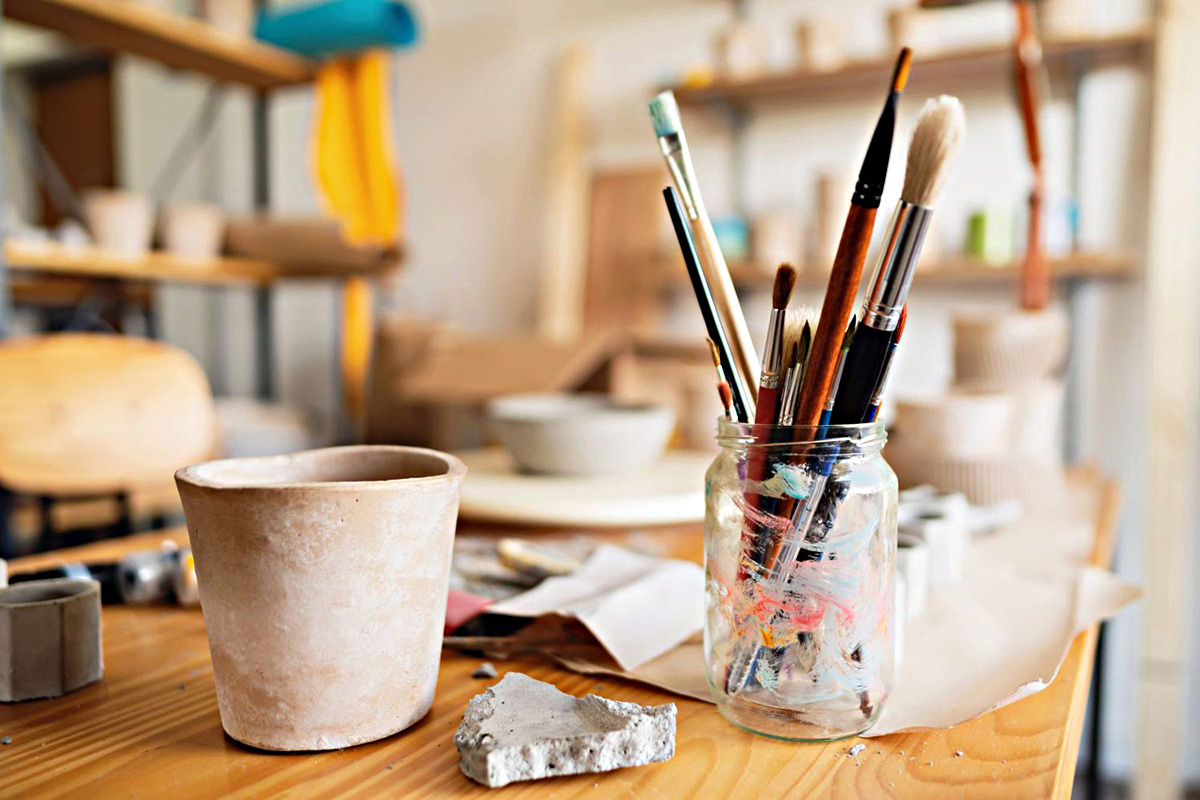
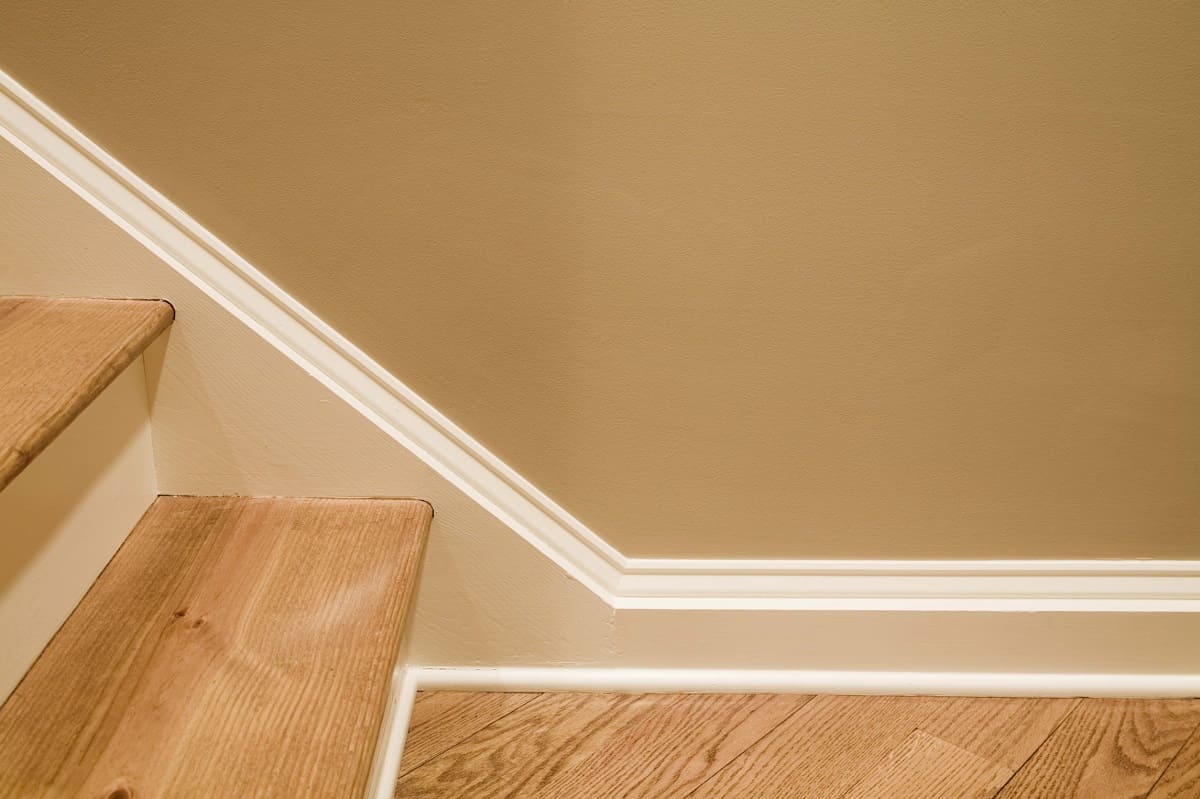
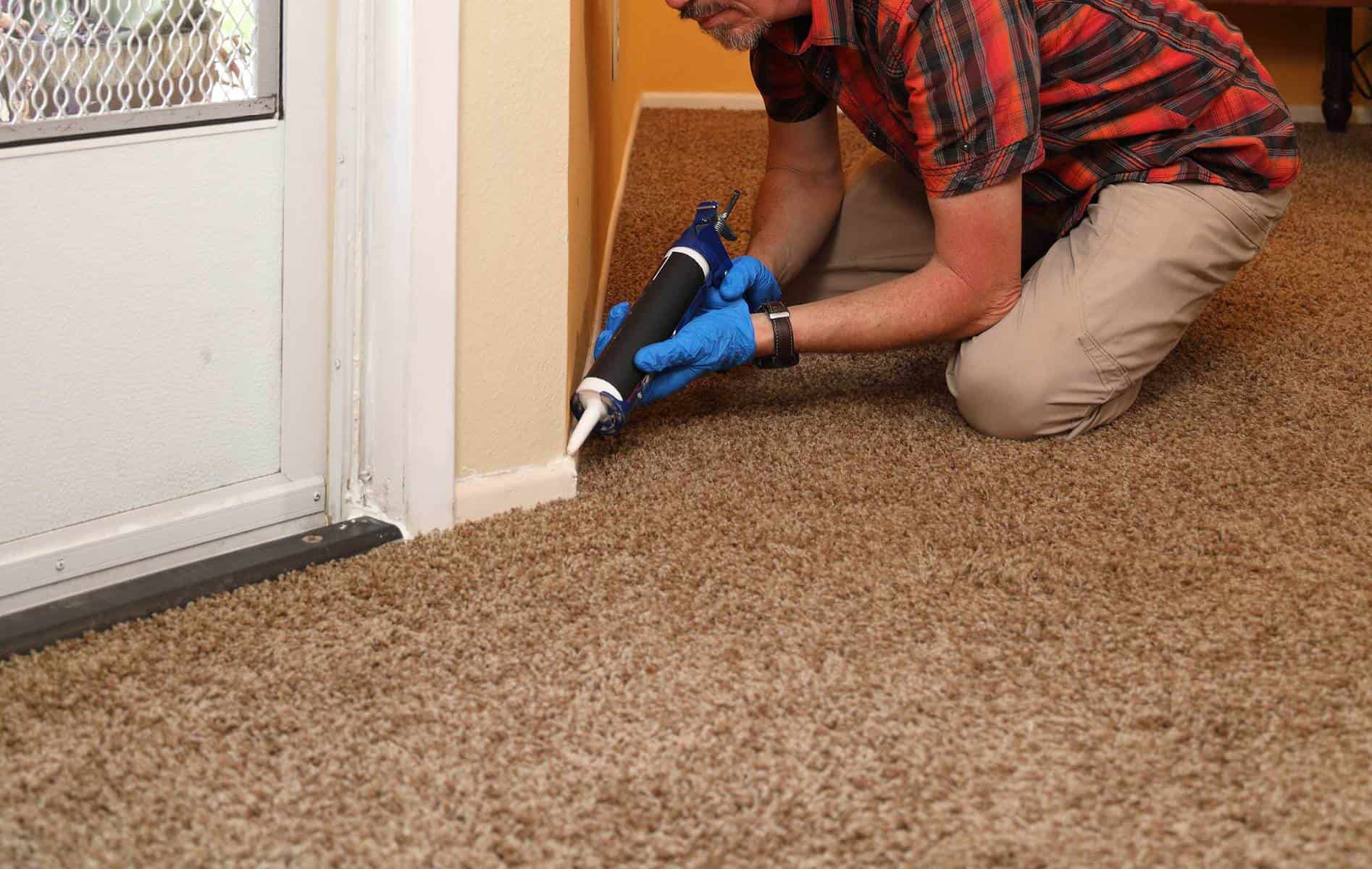
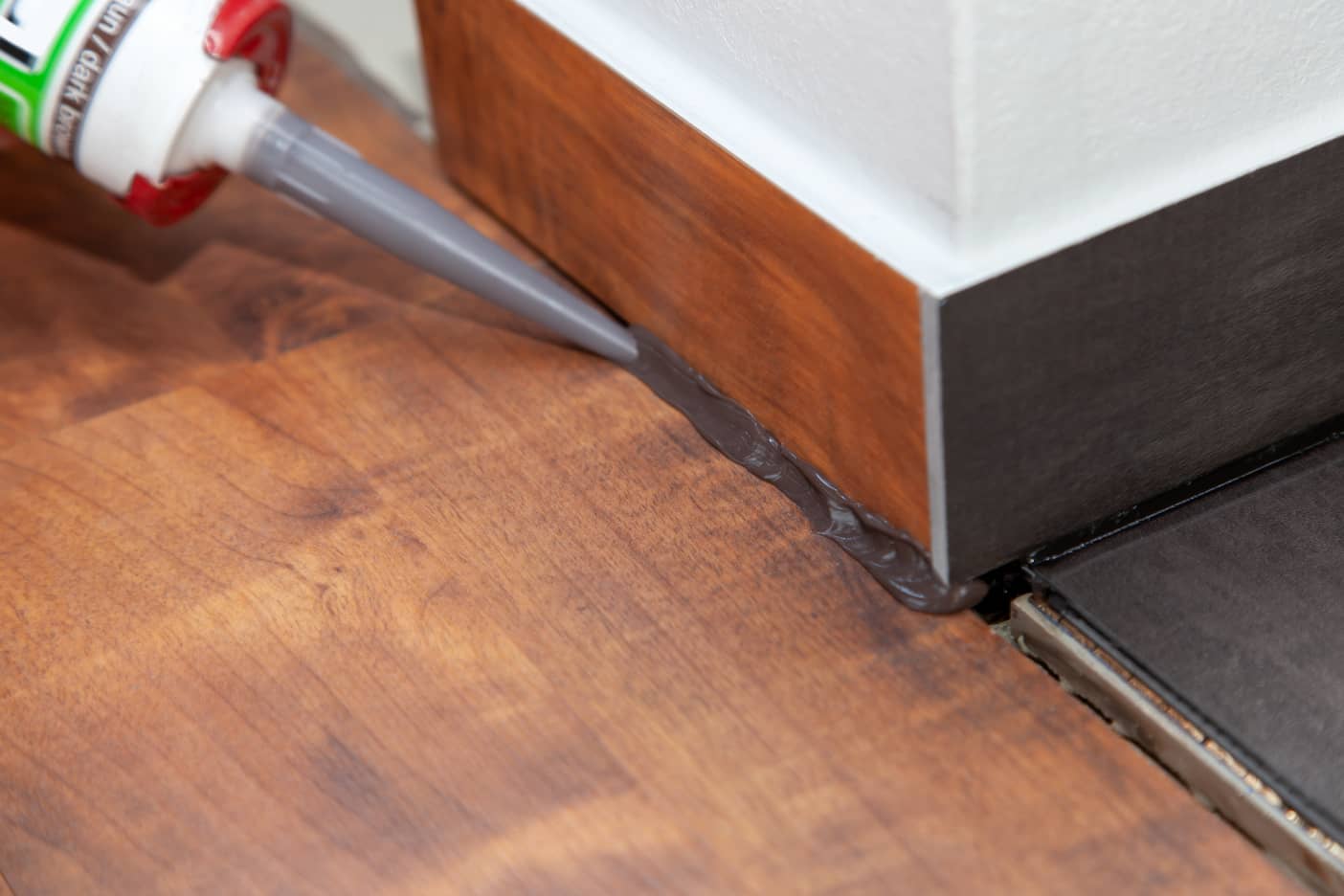
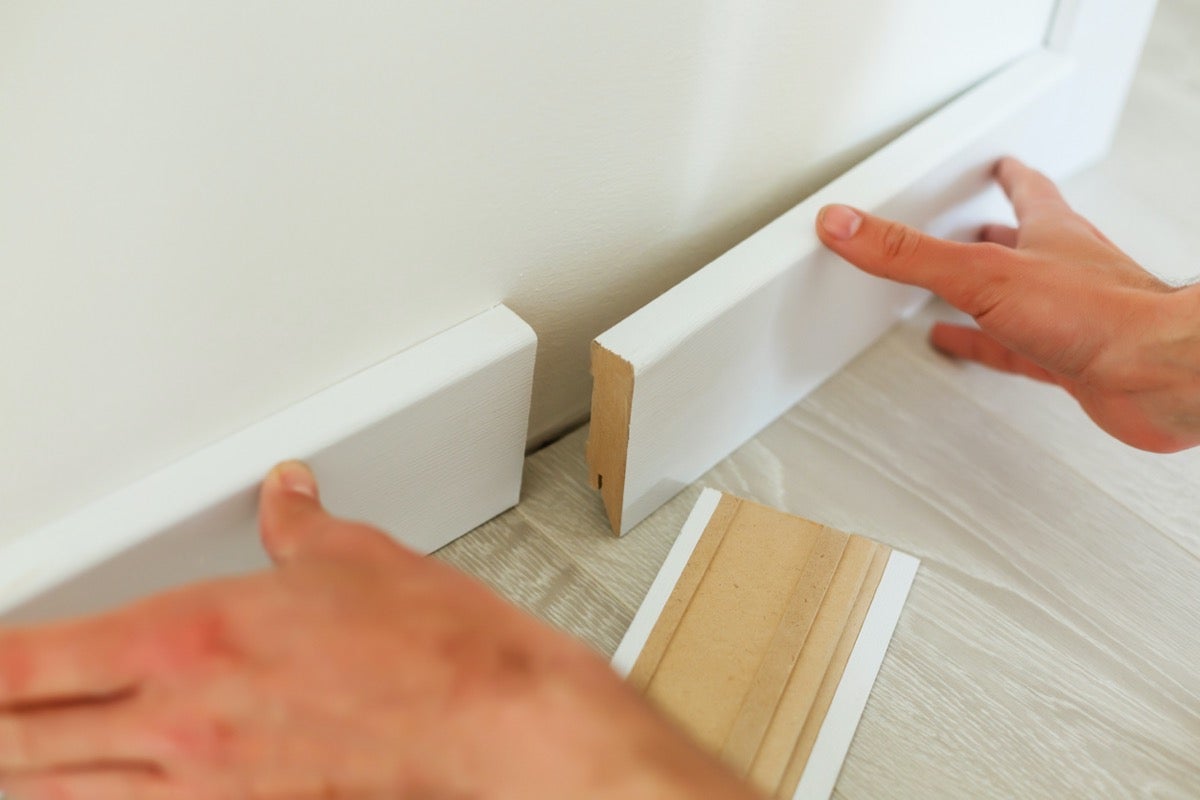
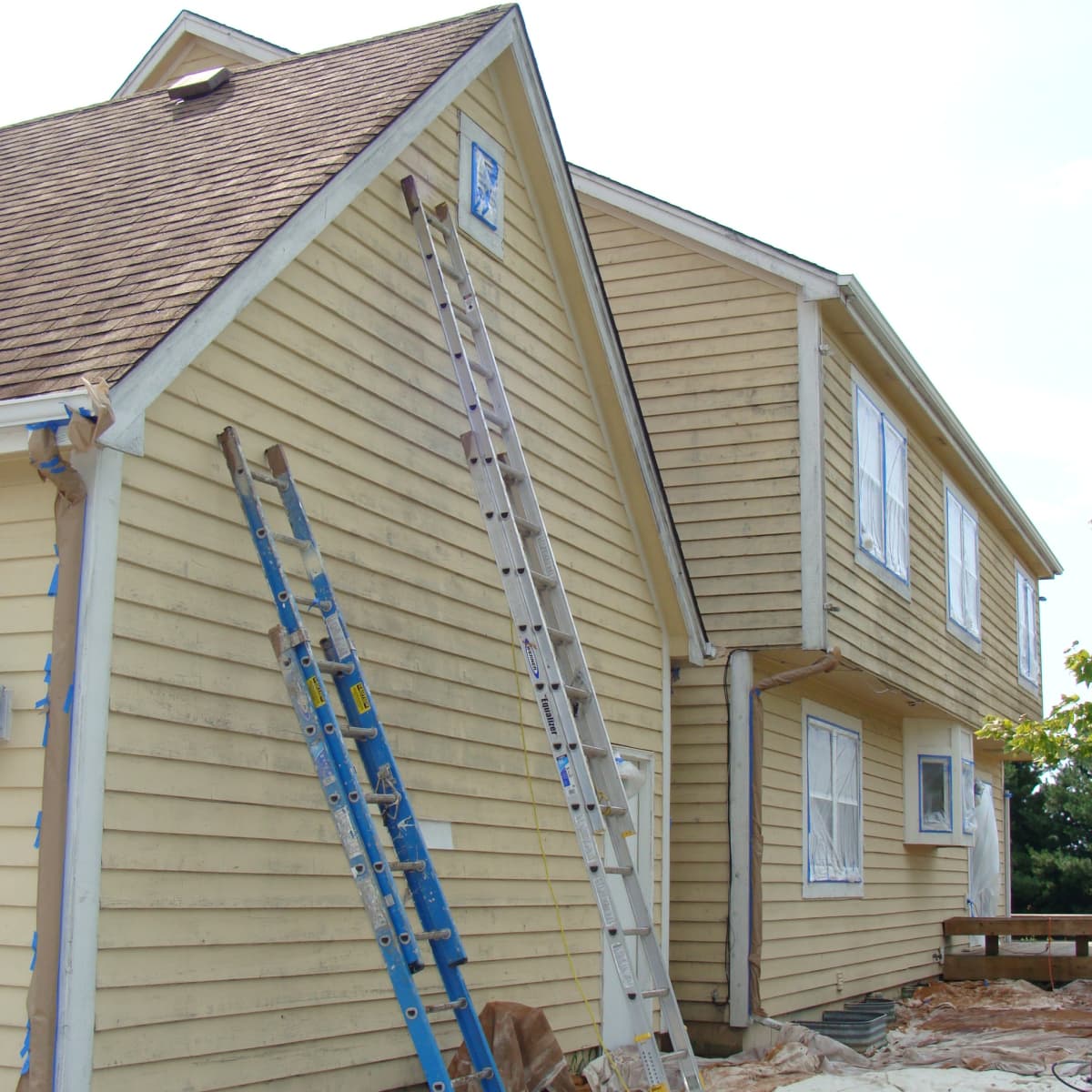
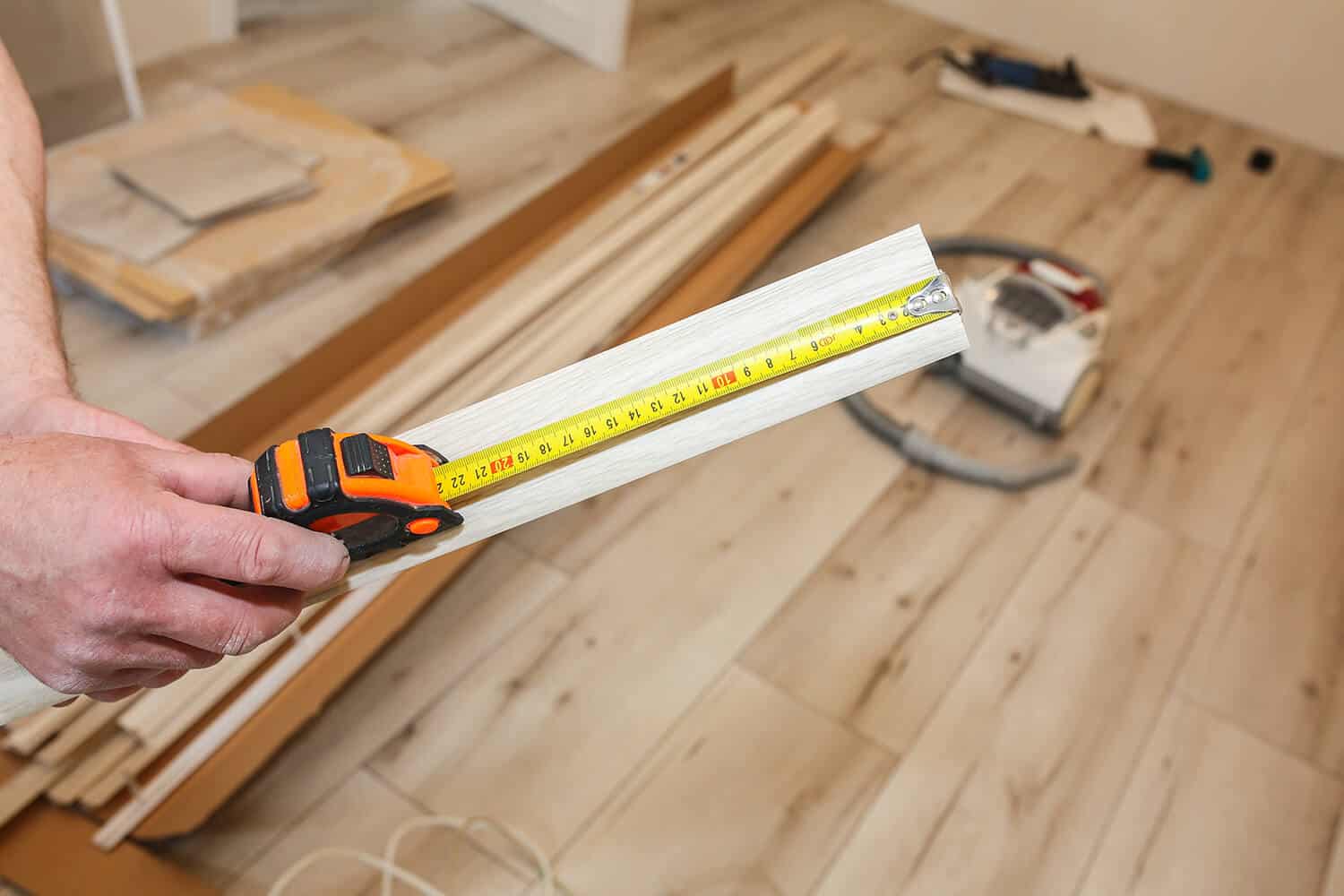
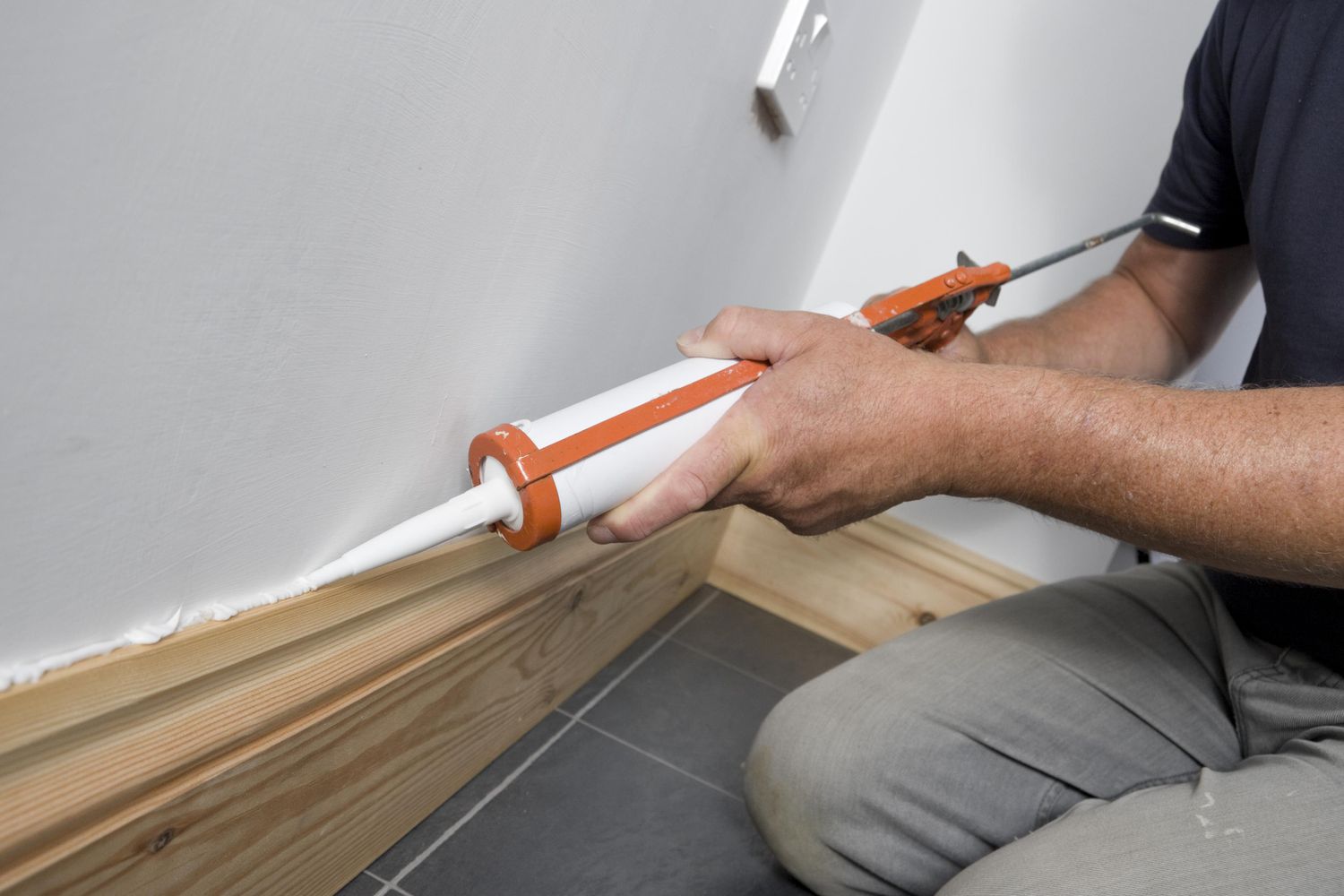
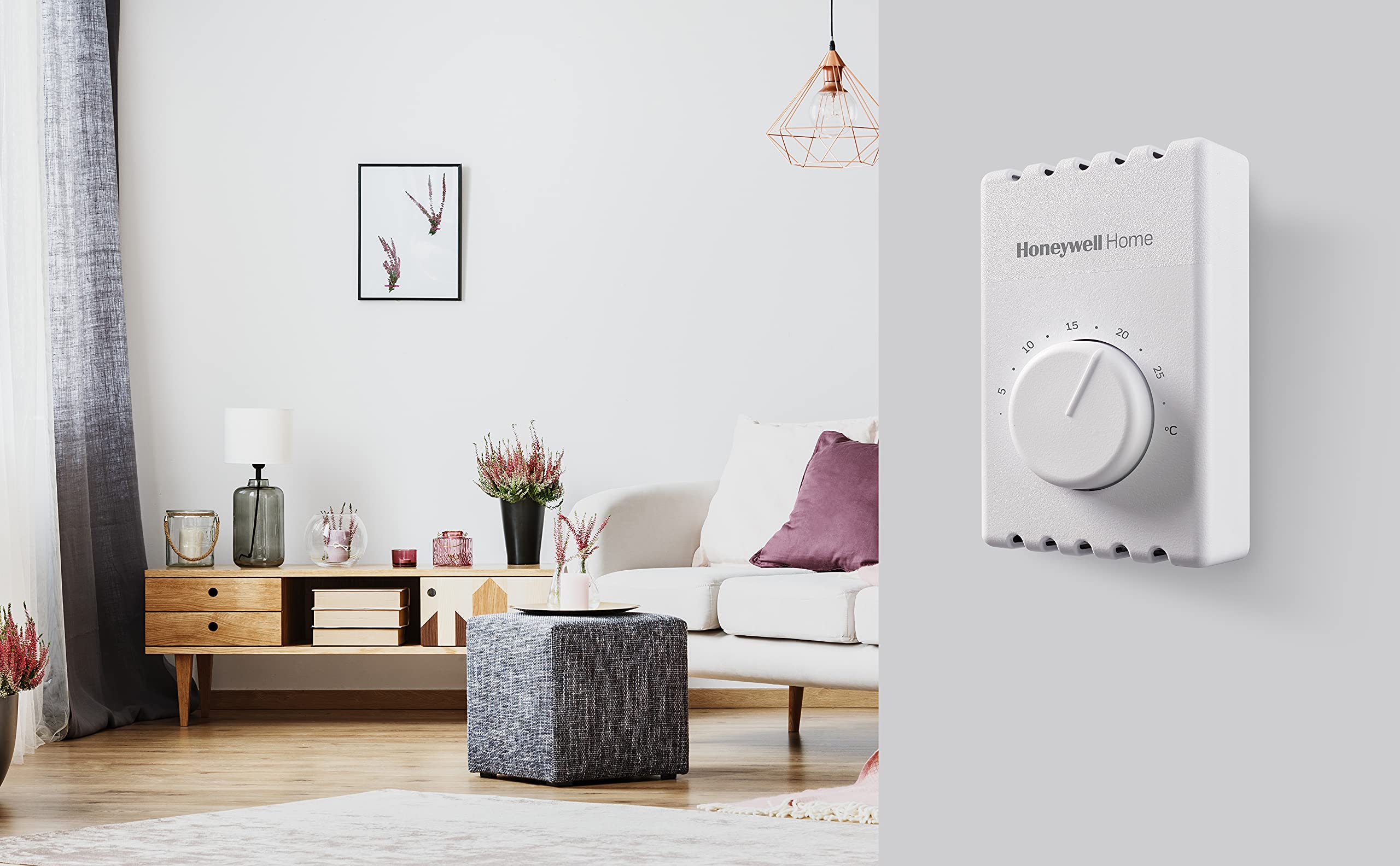

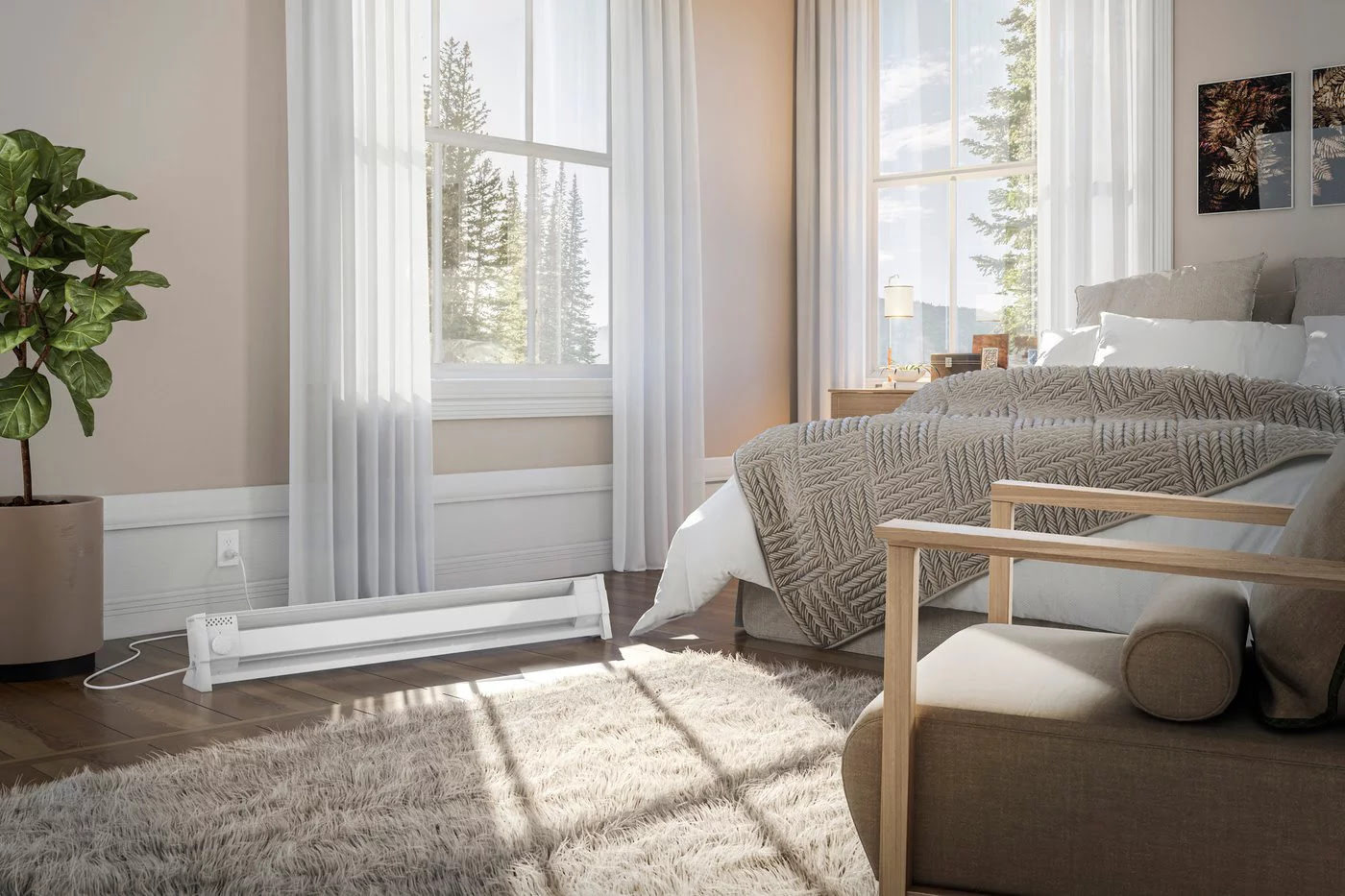
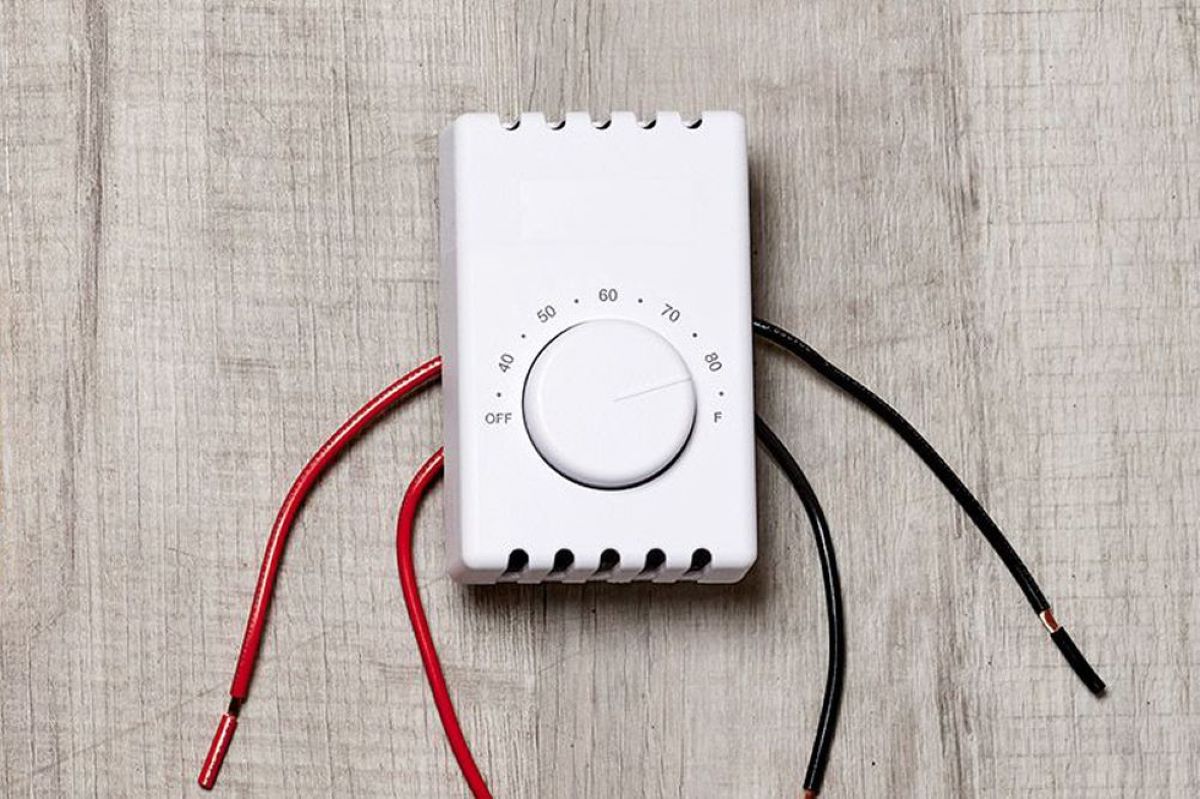

0 thoughts on “How To Paint And Stain Baseboards”